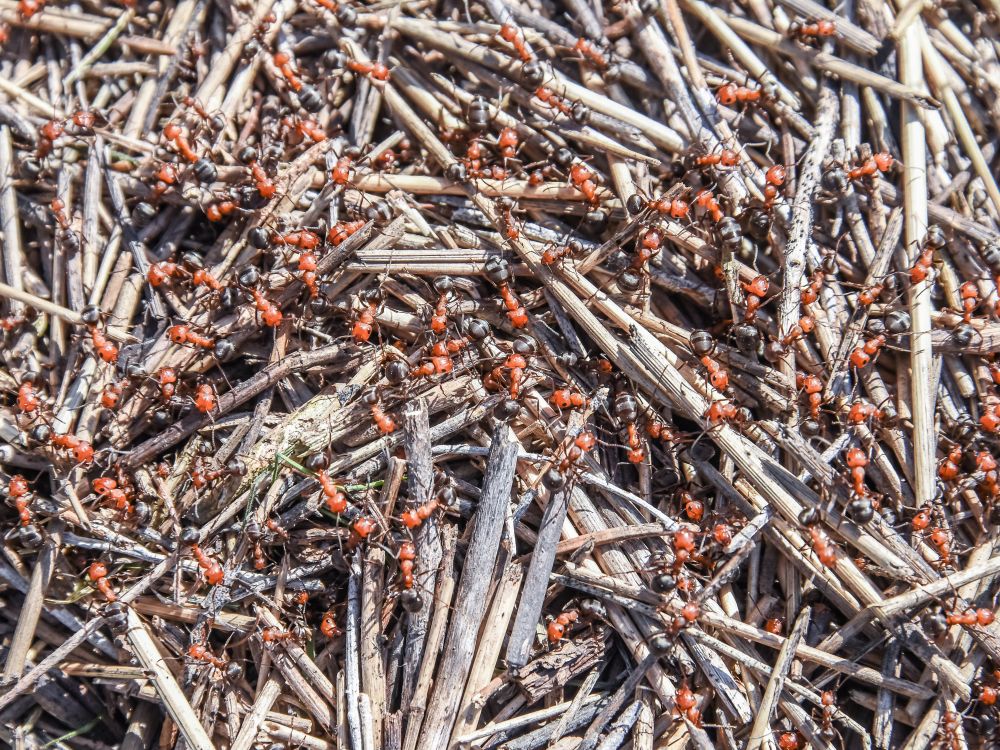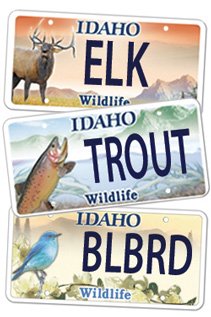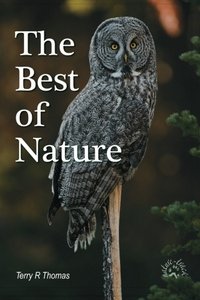Being Small

Although ants are tiny critters, they are wildly successful as a group.
There are some small critters in this world. Last week I delved into the smallest of the small vertebrates, finding that the champions of small could sit comfortably on the head of a thumbtack. That is small, but once you enter the world of the invertebrate, things get really small really fast, down to single-celled organisms requiring electron microscopes to study efficiently.
There must be an evolutionary advantage to being small. After all, most of the experiments with huge animals—dinosaurs, fish and even mammals—didn’t end well. Yet, there are some decidedly strong disadvantages to being small as well. For instance, being small means that you are on the menu of more predators. Hummingbirds, frogs, lizards, mice, and even smaller snakes are on the dining list of the praying mantis. Just imagine what could and does eat the world’s tiniest vertebrate, the recently discovered Brazilian flea toad (actually a frog). At less than half an inch long, its world is a truly dangerous place.
Small animals form the base of the food chain for many of the larger species. Think of krill, the ocean-living zooplankton. These animals range from less than one centimeter to fourteen centimeters long depending on species. In the Antarctic ecosystem these tiny animals are critical. Most of the larger animals in the Antarctic eat krill and some, such as Adelie and chinstrap penguins, and humpback and fin whales get most of their calories from krill. A single humpback whale may inhale two million pounds of Antarctic krill a year.
Being small often means that moving about is more challenging. Imagine what it must be like to try and force your way through a lawn. It would be far worse than a jungle for humans. When things change in a small animal’s world, it may be simply impossible to get to new habitat.
Still, the vast majority of animal life on this planet is small, smaller than say, a hampster. What makes being small so smart? It seems to boil down to investment. The larger the animal, the more investment in raising young. Most larger animals have a single birthing/hatching season each year. A female moose, for instance, gives birth to twins in the spring and raises them for a year. The following spring she has a new calf or two and the first ones are then on their own.
That seems pretty standard among many ungulates. However, the rhinoceros has a pregnancy lasting up to 16 months and it takes a rhino calf three years to mature enough to leave its mother. A white rhino mother may produce a single calf only every 2-4 years. In a 40-year lifespan, she may produce fewer than 20 offspring since she doesn’t sexually mature until around six years old.
Bears have a similar reproduction rate. Although they typically produce litters of two or more, it takes 2-3.5 years to raise the cubs.
It is interesting that the largest animal on the planet, the blue whale, does not have a reproductive cycle with an investment commensurate with its size. Females usually give birth to a calf once every two or three years after a gestation period (pregnancy) of up to 12 months and the calf is on its own after only seven months. That’s not bad for such a large animal.
Now, compare that to a house mouse. A female mouse can give birth to 3–14 pups at a time, but the average litter size is 6–8. Sexual maturity, when a young mouse can successfully breed, occurs around 6-8 weeks. Gestation is 19-21 days and they can breed five (outdoors) to ten (indoors) times a year. I’m not a math whiz, but my attempts at calculating just how many mice this could account for in a single year is 84 females, and that is using conservative values. Most smaller animals can reproduce at similar or even higher rates.
So what, you say? This is actually a big deal. Small animals with their high reproduction rates, are more flexible and reactive when it comes to genetic responses to changes in their world. In other words, they can adapt more quickly than large animals, and in a world changing as quickly as this one, that is an advantage that more than makes up for all the challenges of being small.
Help Idaho Wildlife
When we traveled across the state in October 2017, most of the vehicles we saw using the wildlife management areas did not have wildlife plates. Buying wildlife plates is a great way for non-hunters and hunters alike to support wildlife-based recreation like birding.
C'mon folks, let's help Idaho's wildlife by proudly buying and displaying a wildlife license plate on each of our vehicles!
See below for information on Idaho plates. Most states have wildlife plates so if you live outside Idaho, check with your state's wildlife department or vehicle licensing division for availability of state wildlife plates where you live.
And tell them that you heard about it from Nature-track.com!

Wildlife License Plates
Great news! as of 2024, there are three NEW designs for license plates. They still are bluebird, cutthroat trout and elk, but they are beautiful.
Idaho Wildlife license plates provide essential funding that benefits the great diversity of native plants and wildlife that are not hunted, fished or trapped—over 10,000 species or 98% of Idaho’s species diversity. Game species that share the same habitats (such as elk, deer, antelope, sage-grouse, salmon, trout) also benefit from these specialty plates.
No state tax dollars are provided for wildlife diversity, conservation education and recreation programs. Neither are any revenues from the sale of hunting or fishing licenses spent on nongame species. Instead, these species depend on direct donations, federal grants, fundraising initiatives—and the Idaho Wildlife license plates.
Both my vehicles have Bluebird Plates. I prefer the bluebird because the nongame program gets 70 percent of the money from bluebird plates, but only 60 percent of the money from elk and trout plates - 10 percent of the money from elk plates supports wildlife disease monitoring and testing programs (to benefit the livestock industry) and 10 percent from cutthroat plates supports non-motorized boat access.
Incidentally, in 2014, the Idaho Legislature denied the Department of Fish and Game the ability to add new plates or even to change the name of the elk and cutthroat plates (very specific) to wildlife and fish plates, a move that would have allowed for changing images occasionally and generating more revenue. It would seem that they believe that we Idahoans don't want a well funded wildlife program.
I think it is time we let the Legislature know that Idahoan support wildlife funding and that we would like to see these generic plates come to fruition.

"WOW. What a phenomenal piece you wrote. You are amazing." Jennifer Jackson
That is embarrassing, but actually a fairly typical response to my nature essays. Since The Best of Nature is created from the very best of 16 years of these nature essays published weekly in the Idaho Falls Post Register (online readership 70,000), it is a fine read. It covers a wide variety of topics including humorous glimpses of nature, philosophy, natural history, and conservation. Readers praise the style, breadth of subject matter and my ability to communicate complex and emotional topics in a relaxed and understandable manner.
Everyone can find something to love in this book. From teenagers to octogenarians, from the coffee shop to the school room, these nature essays are widely read and enjoyed.
Some of the essays here are my personal favorites, others seemed to strike a chord with readers. Most have an important message or lesson that will resonate with you. They are written with a goal to simultaneously entertain and educate about the wonderful workings of nature. Some will make you laugh out loud and others will bring a tear to the eye and warm your heart.
Readers Write:
"You hit a home run with your article on, Big Questions in Nature. It should be required reading for everyone who has lost touch with nature...great job!" Joe Chapman
"We enjoyed your column, Bloom Where Planted. Some of the best writing yet. The Post Register is fortunate to have your weekly columns." Lou Griffin.
To read more and to order a copy, click here or get the Kindle version
Copies are also available at:
Post Register
Island Park Builders Supply (upstairs)
Barnes and Noble in Idaho Falls
Harriman State Park, Island Park
Museum of Idaho
Valley Books, Jackson Wyoming
Avocet Corner Bookstore, Bear River National Wildlife Refuge, Brigham City, Utah
Craters of the Moon National Monument Bookstore, Arco, Idaho